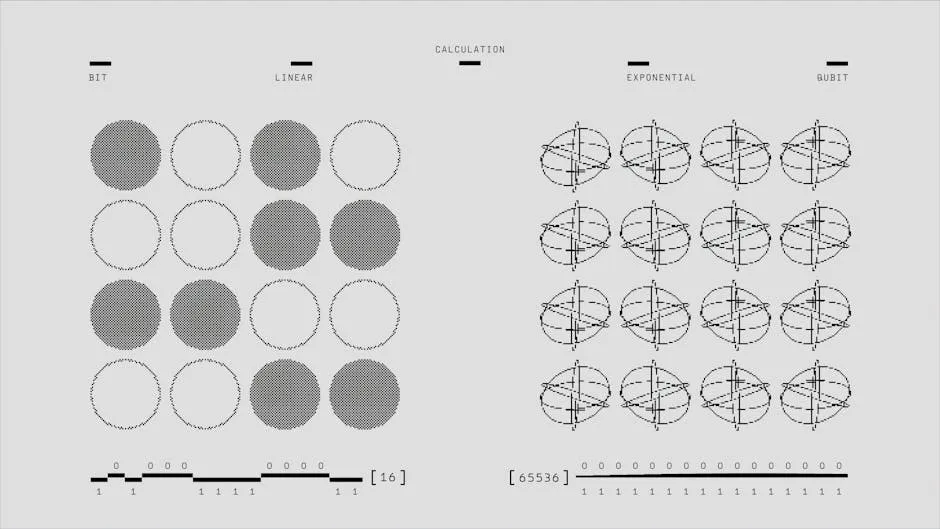Introduction
Welcome to the wild world of AP Statistics! If you’ve ever wondered how numbers can tell stories, you’re in the right place. AP Statistics is a thrilling course that dives into the wonders of data and probability, helping students uncover patterns and make informed decisions. It’s not just about crunching numbers; it’s about understanding the story behind them.
Now, let’s talk about the exam. The AP Statistics exam consists of two sections: multiple-choice questions (MCQs) and free-response questions (FRQs). Among these, FRQs are particularly significant. They make up 50% of your overall score, which means mastering them is crucial. Think of FRQs as your chance to showcase your statistical prowess and creativity.
But wait! Not all FRQs are created equal. They can cover a variety of topics. That’s why organizing them by subject is a game-changer. A topic-wise approach not only streamlines your study sessions but also helps you focus on areas that need more love and attention. Whether it’s exploring one-variable data or diving into inferential statistics, knowing what to expect can make all the difference.

To help you ace these FRQs, consider picking up a set of AP Statistics Prep Books. These gems are packed with practice questions, detailed explanations, and strategies that can help you understand the material inside out.
In this guide, we’ll embark on a detailed exploration of FRQs categorized by topic. This way, you can tackle your studies with confidence, armed with the knowledge to conquer the exam. Let’s get started on this exciting journey of statistics, where every number has a tale to tell!
Understanding the AP Statistics Exam Format
Overview of the Exam Structure
Understanding the exam structure is crucial for success. The AP Statistics exam comes in two parts: the multiple-choice section and the FRQ section. The exam lasts three hours, with 90 minutes allocated to each part.
The multiple-choice section consists of 40 questions, which contribute 50% to your overall score. Meanwhile, the FRQ section also accounts for 50% of your score. This section is divided into two parts: Part A, which contains five short-answer questions, and Part B, the investigative task.
The FRQ section is where you can truly shine. You’ll have 90 minutes to tackle a mix of questions that require not just calculations, but also explanations and justifications. Part A focuses on collecting data, exploring data, and probability, while Part B challenges you to apply your knowledge to real-world scenarios.
Scoring for FRQs is based on a rubric that emphasizes clarity and thoroughness. Each question is graded on a scale of 0 to 4, so it’s essential to demonstrate not only your answer but also the process behind it.
In summary, familiarity with the exam format will help you manage your time effectively and strategize your approach to each question. So, keep your calculators handy and your mind sharp—let’s dive deeper into the types of questions you’ll encounter!
Types of Questions
When it comes to AP Statistics Free Response Questions (FRQs), variety is the spice of life! You’ll encounter two main types: multi-part questions and investigative tasks. Multi-part questions often break down into several related queries, nudging you to apply different skills across the same topic. Think of them as a buffet where you can sample various statistical delicacies all in one go!
Investigative tasks, on the other hand, are like the main course. These questions dive deeper into a scenario, requiring not just calculations but also a thoughtful exploration of the implications behind the data. You’ll need to showcase your reasoning and statistical argumentation skills here, which can feel a bit like being a detective on a statistical crime scene!
Across different units, these questions assess various skills. You might find yourself analyzing data, making inferences, or even designing experiments. So, get ready to flex those statistical muscles!
Detailed Breakdown of Free Response Questions by Topic
Unit 1: Exploring One-Variable Data
In this unit, you’ll get to know the basics of statistics. Key concepts include measures of center (like mean and median) and measures of spread (think range and standard deviation). These concepts are the bread and butter of statistical analysis.
For example, an FRQ might ask you to describe the distribution of a dataset. You’d need to discuss its shape, center, and variability. Scoring criteria focus on how well you identify these features and explain them in context. A clear, logical explanation can earn you those precious points, so don’t be shy about showcasing your understanding!
To truly master this unit, consider keeping a workbook specifically designed for AP Statistics. It can provide invaluable practice and reinforce those foundational concepts!

Unit 2: Exploring Two-Variable Data
Welcome to the world of relationships! In this unit, you’ll explore correlation and regression analysis. Understanding how two variables interact can lead to powerful insights. Maybe you’ll analyze the relationship between study time and exam scores—who doesn’t love a classic!
A common FRQ might require you to interpret a scatterplot and determine the strength of the correlation. Watch out for common pitfalls like confusing correlation with causation. The scoring criteria will reward clear reasoning and accurate interpretations, so keep your eyes peeled for those details!
To enhance your understanding of these concepts, consider using a Graphing Calculator (TI-84 Plus). It’s a powerful tool that will help you visualize data and perform complex calculations with ease!

Unit 3: Collecting Data
Here’s where the magic happens! This unit dives into sampling methods and experimental design. You’ll learn how to collect data effectively while avoiding biases that might skew your results. It’s a crucial skill for any budding statistician!
An FRQ could ask you to design an experiment for a specific scenario. You’ll need to outline your sampling method and explain how it minimizes bias. Scoring insights from guidelines will emphasize clarity and thoroughness in your explanations. Remember: a well-structured response can make all the difference!
For data collection, consider utilizing Statistical Software (SPSS for Students). It’s an excellent resource for managing and analyzing your data effectively!
As you prepare for your AP Statistics exam, understanding these units and honing your ability to tackle FRQs will be key to your success. So grab your calculator, brush up on those formulas, and get ready to tackle the exciting world of statistics!

Unit 4: Probability, Random Variables, and Probability Distributions
Probability is the heartbeat of statistics. This unit introduces key concepts like binomial and geometric distributions. The binomial distribution helps us understand scenarios with two possible outcomes, like flipping a coin. It answers questions like, “What’s the chance of getting heads five times in ten flips?” The geometric distribution, on the other hand, focuses on the number of trials until the first success. Imagine you’re playing a game where you roll a six-sided die until you roll a six. How many rolls can you expect before you succeed? That’s the beauty of geometry in probabilities!
Let’s look at a classic Free Response Question (FRQ) example.
Question: A factory produces light bulbs, and the probability that a light bulb is defective is 0.1. If we randomly select 15 light bulbs, what is the probability that exactly two are defective?
Solution:
- Identify the distribution: This scenario fits a binomial distribution with n = 15 and p = 0.1.
- Use the binomial probability formula: P(X = k) = C(n, k) * p^k * (1-p)^(n-k) where k = 2, n = 15, and p = 0.1.
- Calculate: P(X = 2) = C(15, 2) * (0.1)^2 * (0.9)^(13)
- Plugging in values: P(X = 2) = 105 * 0.01 * 0.2541 ≈ 0.267
Thus, the probability that exactly two bulbs are defective is approximately 0.267.

Unit 5: Sampling Distributions
Sampling distributions are like magic carpets that transport us from the sample to the population. The Central Limit Theorem (CLT) is the star of this show. It tells us that the distribution of sample means approaches a normal distribution as the sample size increases, regardless of the population’s distribution. It’s the reason why we can conduct hypothesis testing and make estimations based on samples!
Let’s consider an FRQ:
Question: A researcher measures the heights of 100 students and finds a mean height of 65 inches with a standard deviation of 4 inches. What can we say about the sampling distribution of the sample mean?
Solution:
- According to the CLT, the sampling distribution of the sample mean will be normal.
- The mean of the sampling distribution is equal to the population mean, which is 65 inches.
- The standard deviation of the sampling distribution (standard error) is calculated as: SE = σ/√n = 4/√100 = 0.4
Thus, the sampling distribution of the sample mean will be normally distributed with a mean of 65 inches and a standard deviation of 0.4 inches.

Unit 6: Inference for Categorical Data: Proportions
When we talk about proportions, confidence intervals and hypothesis testing take center stage. Confidence intervals give us a range of plausible values for the population proportion, while hypothesis testing helps us determine if there’s enough evidence to support a claim.
Consider this FRQ example:
Question: A survey shows that 70 out of 200 respondents prefer chocolate ice cream. Construct a 95% confidence interval for the true proportion of chocolate ice cream lovers.
Solution:
- Calculate the sample proportion: p̂ = 70/200 = 0.35
- The standard error for the proportion: SE = √(p̂(1 – p̂)/n) = √(0.35(0.65)/200) ≈ 0.035
- The z-score for a 95% confidence level is 1.96.
- The confidence interval is: p̂ ± z * SE = 0.35 ± 1.96 * 0.035
- This gives us: 0.35 ± 0.069 = (0.281, 0.419)
Thus, we are 95% confident that the true proportion of chocolate ice cream lovers is between 28.1% and 41.9%.

Unit 7: Inference for Quantitative Data: Means
In this unit, t-tests take center stage! These tests help us determine if there’s a significant difference between means from two groups. It’s essential to know when to use a one-sample t-test versus a two-sample t-test.
For example:
Question: A researcher tests two different fertilizers on plant growth. Group A (n=30) has a mean growth of 10 inches with a standard deviation of 2 inches, while Group B (n=30) has a mean growth of 12 inches with a standard deviation of 2.5 inches. Is there a significant difference in growth?
Solution:
- State the null hypothesis H0: μA = μB and the alternative hypothesis HA: μA ≠ μB.
- Use a two-sample t-test for independent groups: t = (X̄A – X̄B) / √(sA²/nA + sB²/nB)
- Plug in the values: t = (10 – 12) / √(2²/30 + 2.5²/30) ≈ -2.52
- Compare with critical t-value from the t-distribution table for 58 degrees of freedom at a significance level of 0.05.
With these calculations, we can determine if the difference in means is statistically significant or just a chance occurrence. Always remember to avoid common mistakes, like forgetting to check assumptions or misinterpreting p-values!

Unit 8: Inference for Categorical Data: Chi-Square
Chi-square tests are the superheroes of categorical data analysis! They help us determine if there’s a significant association between two variables or if our observed data fits an expected distribution.
First, let’s break down the two main types of chi-square tests. The Chi-Square Test for Independence checks if two categorical variables are related. For instance, we might want to know if there’s a connection between gender and preference for a certain ice cream flavor.
On the other hand, the Chi-Square Goodness-of-Fit Test assesses how well our observed data fits a specific distribution. Imagine we have a die and we want to see if it’s fair. By rolling the die multiple times, we can compare the observed outcomes with expected outcomes to determine fairness!
Here’s a quick example to illustrate.
Example FRQ: A researcher surveys 200 people about their favorite ice cream flavor: chocolate, vanilla, or strawberry. The results show 90 like chocolate, 70 like vanilla, and 40 like strawberry. Test if the preference is equally distributed among the flavors.
To solve this:
- State Hypotheses: – H0: Ice cream preference is equally distributed. – HA: Ice cream preference is not equally distributed.
- Calculate Expected Counts: If preferences are equal, each flavor should have 200/3 ≈ 66.67.
- Perform Chi-Square Calculation: χ² = Σ((O – E)² / E) Where O is observed and E is expected.
- Compare to Critical Value: After calculating, compare your chi-square statistic to a critical value from the chi-square distribution table. If it exceeds the critical value, reject H0.
Grading insights for these types of questions emphasize clarity and methodical approaches. Each step should be clearly outlined. It’s not just about getting the right answer; it’s about showing your work! This way, you can snag those valuable points, even if your final answer isn’t quite right.

Unit 9: Inference for Quantitative Data: Slopes
Linear regression is where the magic happens in statistics! It helps us understand the relationship between two quantitative variables. But, it’s not just about finding that line of best fit; we also need to make inferences about the slope of that line.
When we conduct a t-test for slope, we assess whether the slope is significantly different from zero. This is crucial because a slope of zero indicates no relationship between the variables. Imagine you’re studying how study time affects test scores. A positive slope would suggest that more study time correlates with higher scores.
Example FRQ: A researcher collects data on hours studied and test scores for 30 students. The least-squares regression line is determined to be ŷ = 50 + 10x. Test the significance of the slope at a 0.05 significance level.
Solution:
- State the Hypotheses: – H0: β = 0 (slope is zero) – HA: β ≠ 0 (slope is not zero)
- Calculate the t-statistic: Use the formula: t = (b̂ – 0) / SE(b̂) Where b̂ is the estimated slope and SE(b̂) is the standard error of the slope.
- Compare to Critical t-value: Find the critical t-value from the t-distribution table with n-2 degrees of freedom. If your calculated t exceeds this value, reject H0.
Key considerations for responses include clarity in calculations and interpretations. Be sure to articulate what the slope means in the context of the problem. This helps demonstrate your understanding and can earn you extra points in the grading process!

Tips for Mastering AP Statistics FRQs
Best Practices for Answering FRQs
Ah, the dreaded FRQs! These can seem intimidating, but fear not! Here are some best practices to help you tackle them like a pro.
First off, show your work. This isn’t just a polite request; it’s essential! Graders love seeing your thought process. If you make a mistake, a clear path may still earn you partial credit. Use proper statistical terminology too, as it can enhance the professionalism of your responses.
Next, time management is crucial. You have 90 minutes to answer six questions, so keep track of your time! Allocate around 12 minutes per question for the first five and about 30 minutes for the investigative task.
Speaking of time management, a Study Planner for AP Exams can be a lifesaver. It helps you organize your study sessions and ensures you cover all the necessary material before the exam!

Common Mistakes to Avoid
Now that you know the best practices, let’s talk about common pitfalls. Many students forget to answer every part of a question. Every sub-question is an opportunity for points!
Another frequent mistake is neglecting the units. Always include proper units in your responses to avoid losing easy points.
Lastly, don’t rush through calculations. Double-check your work. Accuracy is crucial, especially in statistics.
By mastering these tips and avoiding common mistakes, you’ll be well on your way to conquering the AP Statistics FRQs! Happy studying, and remember: with practice, you’ll turn those numbers into your allies!
Resources for Further Practice
Practicing Free Response Questions (FRQs) is vital for mastering AP Statistics. Luckily, there are a plethora of resources available to aid you in your quest for statistical excellence.
First up, the College Board’s official website is a treasure trove of past FRQs. You can find exams dating back several years, complete with scoring guidelines and sample answers. This will help you understand the expectations and nuances of the grading process. Don’t forget to check out the Chief Reader Reports for insights on common student mistakes.
Another fantastic option is StatsMedic, which provides a searchable database of FRQs organized by topic. You can easily find questions that align with the units you’re studying, making it easy to focus on your weak spots. Their format is user-friendly and perfect for quick reference.
If you’re looking for something more interactive, consider joining online study groups or forums. Platforms like Reddit or Discord often have dedicated channels for AP Statistics, where students share resources, discuss problems, and offer encouragement. Collaborative learning can enhance your understanding and make the process more enjoyable.
For those who prefer a structured approach, check out MyMathsCloud. They offer past papers categorized by topic, making it easy to drill down into specific areas such as probability or regression. This focused practice can boost your confidence and performance on exam day.
Additionally, websites like Fiveable and PrepScholar offer study guides and practice questions with detailed explanations. These resources often include video tutorials that can clarify complex concepts and provide tips for tackling FRQs.
Lastly, don’t overlook the power of YouTube! Many educators share helpful videos that break down FRQs, offering step-by-step solutions and valuable exam strategies. Watching these can reinforce your learning and give you a fresh perspective on challenging topics.
With these resources at your fingertips, you’re well-equipped to tackle those FRQs confidently. Remember, practice makes perfect, so dive into these materials and start honing your statistical skills!

Conclusion
Practicing Free Response Questions (FRQs) by topic in AP Statistics is not just a good idea—it’s essential for success! Focusing your efforts on specific units allows you to sharpen your skills and build confidence. Each unit presents unique challenges, and understanding these nuances can make all the difference on exam day.
Utilizing the resources outlined in this guide will help you engage with the material more effectively. Free response practice is where you can truly showcase your statistical reasoning, problem-solving abilities, and clarity in communication. It’s your chance to shine!
As you prepare, keep in mind that consistent practice and seeking feedback are key strategies. Don’t shy away from study groups or online forums—collaboration can lead to new insights. Moreover, revisit past FRQs to familiarize yourself with the question formats and scoring rubrics. This familiarity will lessen anxiety and boost your performance.
In closing, remember that success in AP Statistics is within reach. Embrace the challenge, utilize the resources available, and stay focused on your goals. With determination and strategic practice, you’ll be well on your way to acing those FRQs!
FAQs
For a thorough understanding of topics covered in AP Statistics, check out this AP Statistics formula sheet that can help you ace the exam.
Please let us know what you think about our content by leaving a comment down below!
Thank you for reading till here 🙂
All images from Pexels




